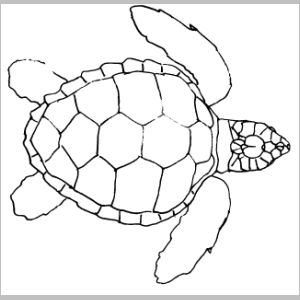Bulletin 21 - November 1983: The Loggerhead Turtle
The Loggerhead Turtle
by J.N.B. BrownA very large and very dead turtle specimen was noted by Terry Giles on the Corniche beach on 16th March 1983. Although it was in an advanced state of decomposition he called me as reptile recorder for the Group and suggested that I "did something". I located the carcass early on the morning of 17th and photographed it from several angles, despite its unwholesome appearance and 'high' odour. The following measurements were made:
| Carapace length | - | 91 cm (over the curve) |
| - | 86 cm (straight) | |
| Carapace width | - | 84 cm (over the curve) |
| - | 66 cm (straight) | |
| Head width | - | 19 cm |
| Head length | - | 28 cm (including neck) |
| Flipper (front) | - | 38 cm (straight) |
| Flipper (rear) | - | 19 cm (straight) |
The carapace was covered with a large number of barnacles (some 3 by 4 cm), making it impossible to count the bony plates. The plastron was not checked.
The loggerhead turtle is carnivorous, having a very varied diet of crabs, clams, oysters, sea urchins and jelly fish, though it also takes in some algae too. A very wide-ranging seas species, the loggerhead 'nests' in Australia, the West Indies, SE Asia and along the east coast of USA. A few specimens have been recorded in The Arabian Gulf area and it is possible that some might breed on isolated offshore islands.
Between 60 and 150 eggs are laid in a single clutch above the high tide line. Several clutches are laid during the period from April to August, incubation varying between 30 and 65 days depending on site and warmth. Many predators will rob the nests, including foxes and feral cats and dogs. After hatching, the young turtles face a daunting trek to the sea with the possibility of attacks by ghost crabs and gulls. Once in the water their main enemies are fish such as sharks. All these natural dangers, added to the destruction of breeding grounds by man-made developments (Jebel Ali port was built on the breeding area of the green turtle - Chelonia mydas) are contributing to a rapid decline in the numbers of all turtle species. Perhaps the new Umm al Qawain Marine Research Station will help in the conservation of turtles in Gulf waters.
BibliographyThe Amphibians and Reptiles of Bahrain, by M.D. Gallagher
British Turtles, by L.D. Brongersma.
The Turtle, by A. Carr.
Sea Turtles, by R. Bustard.
Living Reptiles of the World, by K.P. Schmidt and R.F. Inger.
ENHG Bulletin 7 April 1979.
